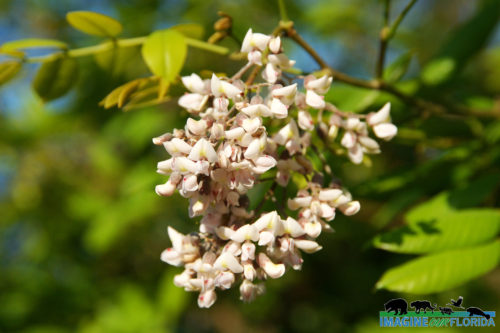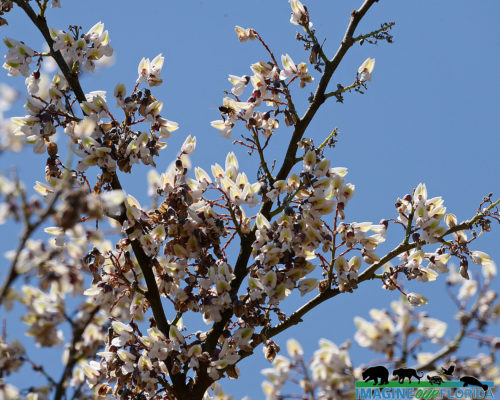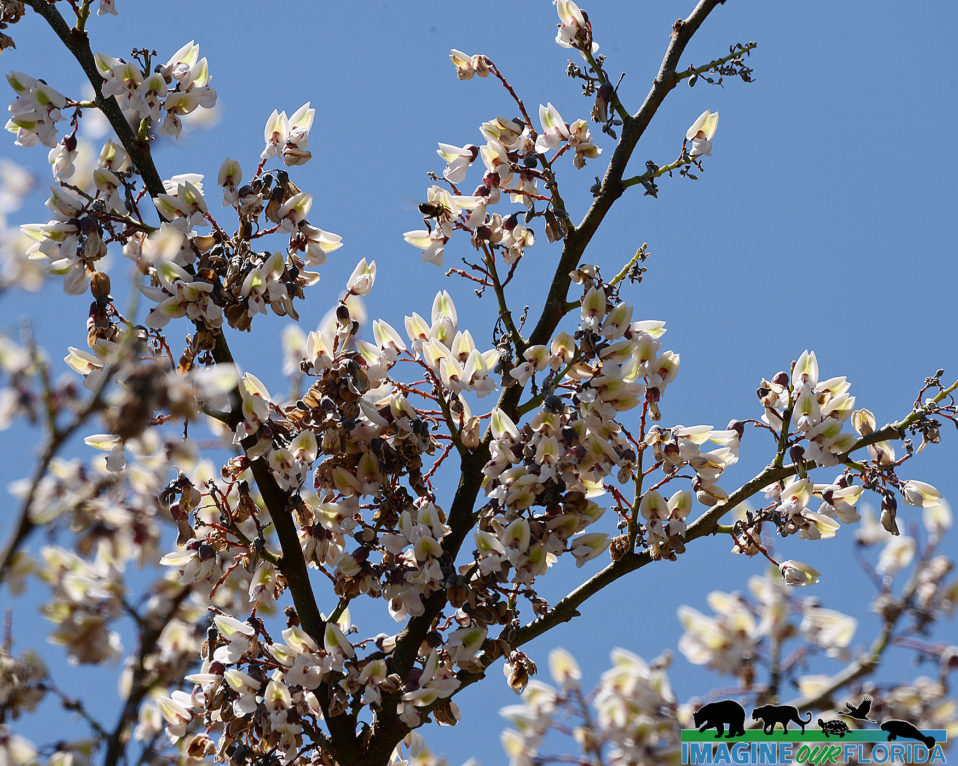The Jamaican Dogwood (Piscidia piscipula) is also known as the Florida Fish Fuddle Tree. It is a medium-sized tree that inhabits the coastline from Miami-Dade County through Monroe County including the Florida Keys, north along Florida’s west coast to Pinellas County. The Jamaican Dogwood is also a local tree in Central America and the West Indies. It can now be found in Texas, Mexico, and the northern part of South America.
For years, the Jamaican Dogwood has been used traditionally as a remedy for nerve pain, migraine, insomnia, anxiety, fear, and nervous tension. However, the tree is toxic to humans. Native Americans once used the tree as a fish poison by pouring pieces of bark and leaves from the tree into small bays. The rotenone of the tree would make fish float to the surface where the fishermen could easily grab them. Experts consider all parts of the Jamaican Dogwood tree to be poisonous when ingested.
The Jamaican Dogwood can grow up to 20 feet. The bark is yellow or grayish-brown on the outer surface, and lighter colored or white on the inner surface. The bright green leaves of these trees grow alternately and are about half an inch wide and 2-4 inches long. The wood is resistant to decay and is perfect for woodworking. In The Keys, Jamaican Dogwood is found in the upper canopy. It makes a wonderful shade tree for your yard or garden in subtropical and tropical habitats. Hammock skipper butterflies use the trees as larval hosts.
Author: Steven Marquez- Valencia College student
Photo Credit: Dan Kon
Work Cited:
“Jamaican dogwood.” Mount Sinai, https://www.mountsinai.org/…/health-library/herb/jamaica-
Accessed on 14 October 2021.
Woodmansee, W. Steven. “The Fabulous Florida Fish Fuddle Tree.” Florida Native Plant Society Blog, 03 May 2014, http://fnpsblog.blogspot.com/…/fabulous-florida-fish… http://fnpsblog.blogspot.com/2012/05/fabulous-florida-fish-
Accessed on 14 October 2021.
Landscape Plants University of Florida IFAS https://hort.ifas.ufl.edu/woody/Pages/pispis/pispis.shtml Accessed on 14 October 2021 





Recent Comments